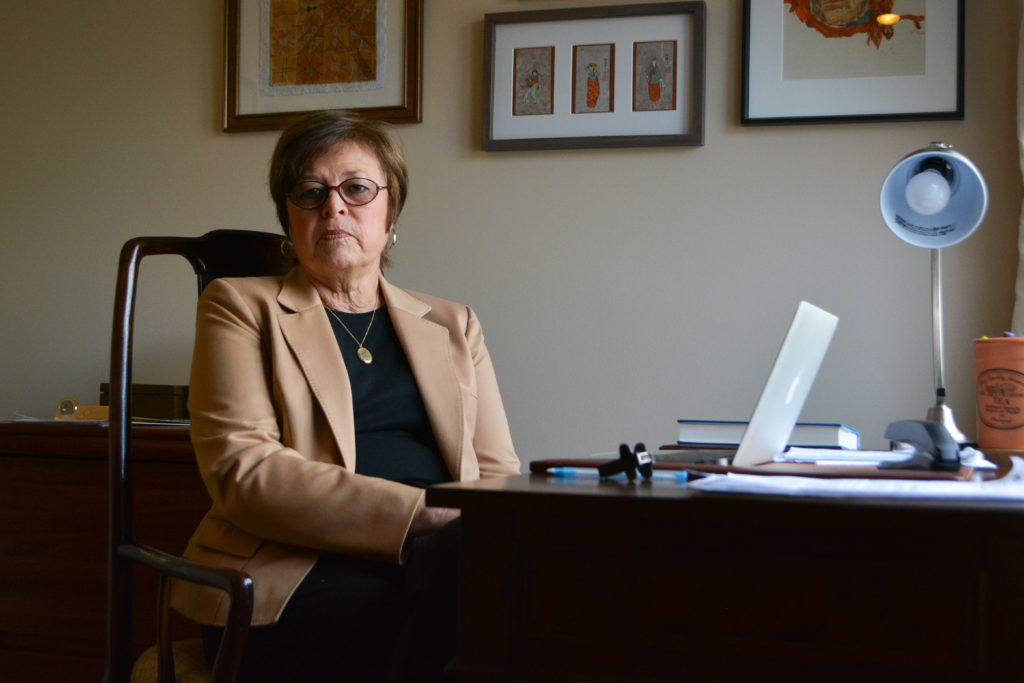Faculty in the medical school have dozens of ideas about improving working conditions for female professors.
A task force of faculty and officials in the School of Medicine and Health Sciences shared more than 30 recommendations for new ways to support women with medical school administrators last semester. The suggested policies included promoting opportunities for associate- and professor-level positions and requiring division and program directors to complete bias training, faculty said.
Jeffrey Akman, the dean of the School of Medicine and Health Sciences, said in an email to The Hatchet earlier this month that he launched the SMHS Task Force on Women Faculty last year and received recommendations from the task force “recently.”
“I would like to see any of the recommendations that are not completed during my tenure, be completed by my successor,” Akman, who announced his resignation Jan. 17, said.
Jean Johnson, the chair of the task force and a professor of nursing, said the task force began meeting last April and submitted 32 recommendations to medical school leadership.
“The purpose was to examine issues related to limiting women faculty from moving into senior leadership positions and professor-level appointments and make recommendations to strengthen support for women to be leaders and be promoted,” Johnson said in an email.
Fourteen women currently hold dean and associate dean positions in the medical school, compared to 10 men, according to the school’s leadership directory.
Johnson said the recommendations partly focused on promoting and offering tenure positions to women faculty. One suggestion dictates that all department chairs would meet with the school’s Appointments, Promotion and Tenure committee once a year to review promotion criteria and require all of the committee’s members, chairs, division directors and program directors to complete bias training, she said.
In the leadership category, the group recommended that the school start a group for women in medicine and science, while a third category focuses on retention of professors with “enhanced family-friendly” policies. One recommendation includes increasing the number and comfort of lactation spaces on campus, Johnson said.
She said the last category asks the medical school to be more transparent in releasing data about salaries and promotion.
The task force’s report was given to Akman in December, and the outgoing dean met with the task force on Jan. 4 to discuss implementing the recommendations, Johnson said. She said work has begun on “several” recommendations, like developing and implementing a mentoring program for women faculty.
Johnson added that she expects at least 90 percent of the recommendations to be implemented within the next two years. She said there are some “challenging” recommendations, like creating emergency child care and better family leave practices, because the changes will depend on University policy, not medical school policy.
“VP Akman is committed to moving the work forward before he steps out of the VP and dean position and have it continue with the next leader,” she said.
Lisa Anderson, a spokeswoman for the medical school, said the task force held a series of meetings over nine months where members evaluated leadership strategies used at other academic medical centers. She did not specify what approaches were used by other schools.
She said the medical school has more female faculty than the average university’s medical center, but the medical school is continuously attempting to improve. While the University does not release information about the gender of faculty by school, women made up about 57 percent of all non-tenured positions and about 40 percent of all tenured or tenure-track positions in 2016, according to institutional data.
“We are always striving for excellence in diversity and inclusion and would like to see more women faculty at higher rank levels and more in senior leadership positions,” Anderson said in an email.
She said Akman, the dean of the medical school, is working to enact certain recommendations immediately, but some long-term recommendations will take time to enact. She did not specify what recommendations would be implemented immediately or how many recommendations were made.
“Women are now the majority of entering medical students, and we want to give them a greater number of women role models,” she said in an email.
Women have made up more than 50 percent of the medical school’s student body for at least the past six years.
Anderson declined to say how the incoming dean of the medical school will work with the task force to continue implementing the recommendations.
Victoria Shanmugam, the director of the division of rheumatology and an associate professor of medicine, said representatives of clinical and basic science and health science faculty were invited to participate in the task force.
“The task force made recommendations to SMHS focused on creating a cohesive environment for all faculty at SMHS so that the school can become a leader among academic health centers specifically in the recruitment and retention of women on the faculty,” Shanmugam said in an email.
Naomi Luban, the vice chair of academic affairs at Children’s National Health System and a professor of pediatrics, said she and fellow female pediatricians have a “heightened sensitivity” to the opportunities and continuing challenges for women in medicine, like moving into higher leadership roles.
The number of women teaching medicine has been slowly increasing for the past decade. In 2017, women made up about 22 percent of all medical school professor positions, compared to 18 percent in 2008, according to data from the Association of American Medical Colleges.
“Any organization that seeks to implement culture changes needs buy-in from mid-level as well as senior leadership to ensure culture change is not simply a goal, it becomes a reality,” Luban said in an email.





